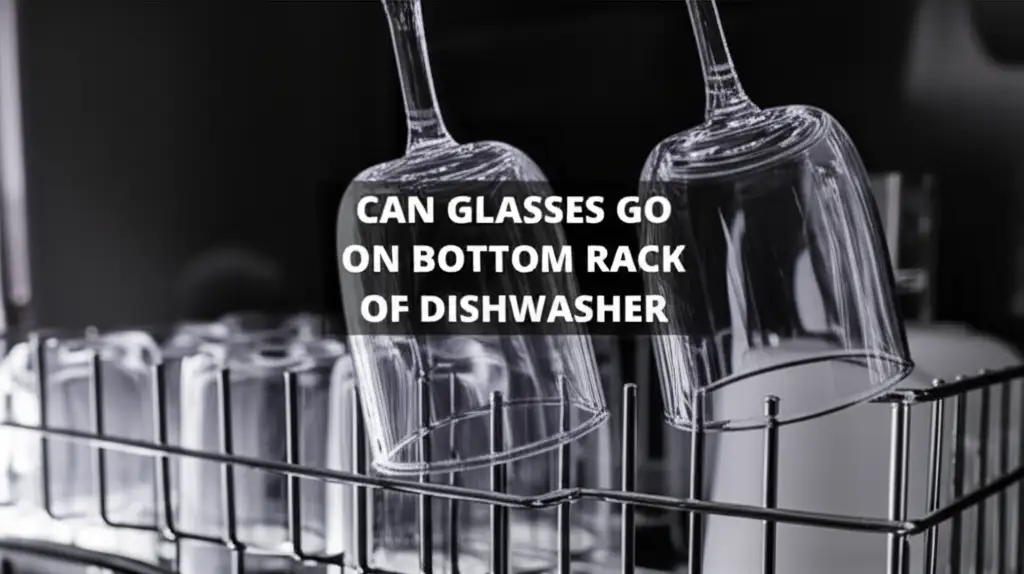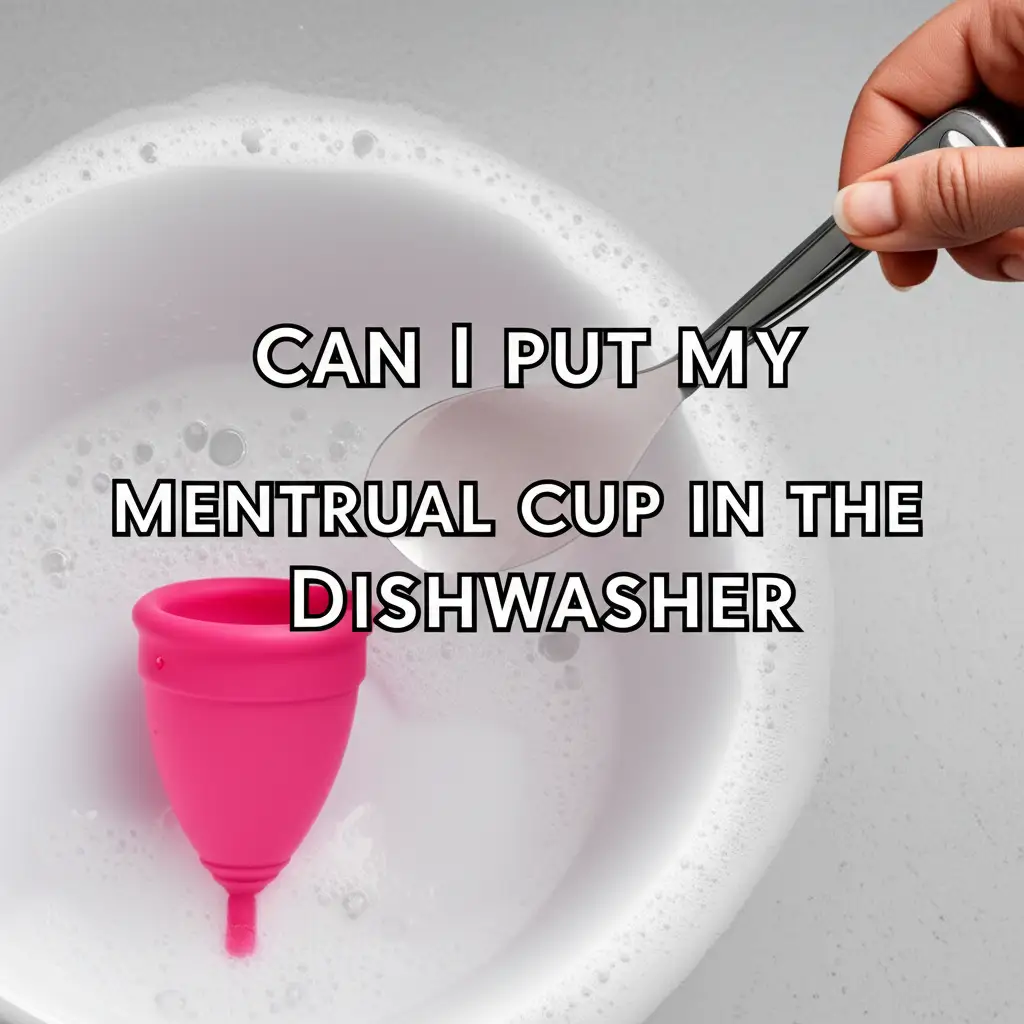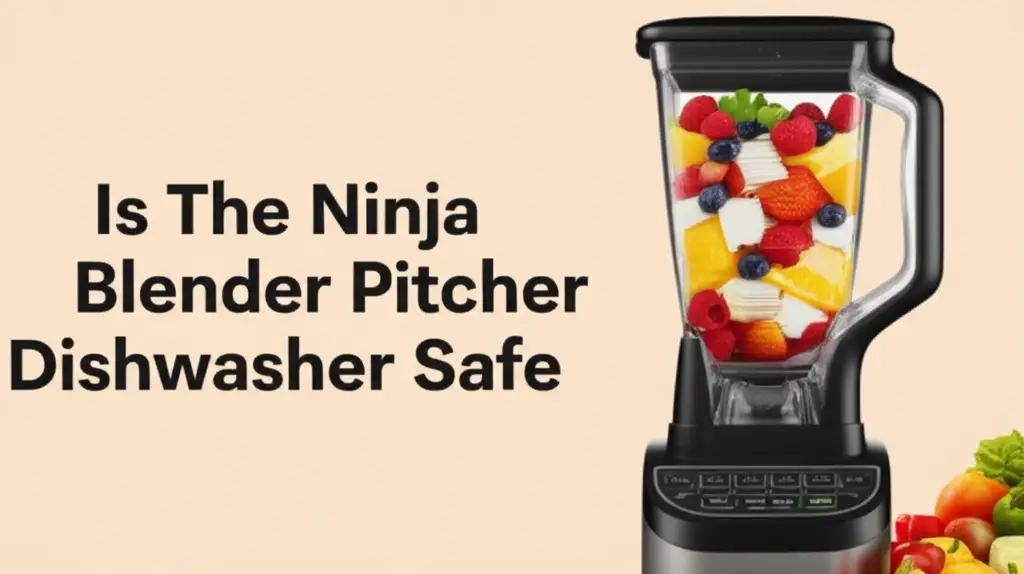· Elira Thomsen · Dishwasher Care · 16 min read
Can Glasses Go On Bottom Rack Of Dishwasher

Bottom Rack Dishwasher: Is It Safe for Your Glasses?
We all love the convenience of a dishwasher. It saves us time and effort. But a common question arises when loading dishes: “Can glasses go on bottom rack of dishwasher?” Many people place plates and bowls down low. Glasses often end up on the top rack. This article will explore why placing glasses on the bottom rack might be risky. We will discuss what types of glasses are safe there, and how to protect all your glassware. I will share tips for proper loading to avoid damage. You will learn how to get sparkling clean results every time. Let’s make sure your glasses come out perfect.
Takeaway
- Most delicate glasses belong on the top rack.
- Bottom rack heat and spray can damage many glass types.
- Check glass manufacturers’ instructions for dishwasher safety.
- Space glasses carefully to prevent breakage and etching.
- Consider water temperature and cycle choice for glassware.
You can put some sturdy glasses on the bottom rack of your dishwasher. However, this is not ideal for most glassware. Delicate items, tall glasses, and crystal should always go on the top rack. The bottom rack exposes items to higher heat and stronger spray, which can cause damage.
Understanding Dishwasher Zones: Top Rack vs. Bottom Rack
Every dishwasher has different cleaning zones. These zones expose items to varying levels of heat and water pressure. Understanding these differences helps you load your dishwasher correctly. Proper loading protects your dishes and glassware. It also ensures everything gets clean.
The bottom rack is usually closer to the heating element. It also receives the strongest spray from the wash arms. This high heat and strong spray are perfect for very dirty dishes. Think about pots, pans, and heavily soiled plates. These items need intense cleaning power. This setup makes the bottom rack less suitable for delicate items. My large dinner plates always go on the bottom. They come out spotless every time.
The top rack is further from the heating element. It receives a gentler spray. This makes it ideal for items that cannot handle high heat or strong pressure. Plastic containers, serving bowls, and most glassware belong here. The gentle wash helps prevent melting, warping, or cracking. I always place my plastic food storage containers on the top rack. They last much longer this way.
Knowing these zones prevents common dishwashing mistakes. It keeps your dishes safe and clean. Always think about an item’s durability before placing it in the dishwasher. This simple rule saves you money and time in the long run.
Why the Bottom Rack Is Often Unsuitable for Glassware
Placing glasses on the bottom rack of your dishwasher often leads to problems. This area experiences very high temperatures. It also gets strong water jets. These conditions can cause several issues for your glassware. I learned this the hard way with a favorite drinking glass.
First, high heat can cause thermal shock. Glass expands when hot and contracts when cool. Quick changes in temperature make glass crack or break. The heating element in the bottom of the dishwasher gets very hot during the drying cycle. This heat can be too intense for some types of glass. I once heard a loud pop from my kitchen. It was a glass cracking on the bottom rack.
Second, the powerful water jets can move glasses. Glasses can hit each other during the wash cycle. They can also hit other dishes. This can lead to chips or cracks. Tall glasses are especially vulnerable. They may tip over or collide with the upper spray arm. I always make sure there is enough space between glasses to avoid this.
Third, glasses on the bottom rack can suffer from etching. Etching is a permanent cloudiness on glass. It looks like a white film. High heat and certain detergents combine to leach minerals from the glass surface. This damage is irreversible. How to clean cloudy glasses from the dishwasher can help with mineral buildup, but not true etching. I have a few cloudy glasses from earlier dishwashing mistakes.
Consider these risks before you load any glass onto the bottom rack. Protecting your glassware means knowing its limits. The top rack offers a safer, gentler clean for most glasses.
Types of Glasses Safe for the Bottom Rack
While the top rack is generally best, some glasses can handle the bottom rack. These items are designed for more intense conditions. Always check the manufacturer’s label first. Most glassware will have a “dishwasher-safe” symbol. This symbol looks like a plate and fork inside a square box with water droplets.
Very sturdy glass items may go on the bottom rack. Thick, tempered glass drinking glasses are often fine. Pint glasses or heavy tumblers might survive the stronger wash. These glasses have a robust build. They resist high heat and strong impacts better. I often put my everyday glass measuring cups on the bottom. They are made from very thick, heat-resistant glass.
Jars used for canning or storage are usually safe on the bottom rack. These are made from thick, durable glass. Mason jars, for example, are built to withstand heat during the canning process. They can typically handle the dishwasher’s bottom rack without issue. Just make sure they are empty and open.
Heat-resistant glass bakeware, like Pyrex or Anchor Hocking, is also suitable. These items are specifically made to go from oven to table. They handle high temperatures very well. I always place my glass casserole dishes on the bottom rack. They fit well and come out clean. Are Bodum double-wall glasses dishwasher safe? Some are, but typically on the top rack. Double-wall glasses are often more delicate than solid bakeware.
Always use your judgment. If a glass feels thin or delicate, place it on the top rack. When in doubt, hand wash. This extra step protects your cherished items.
Protecting Your Glassware: Best Practices for Dishwasher Loading
Proper loading is key to protecting all your dishes, especially glasses. Even when glasses go on the bottom rack, loading them right makes a big difference. Incorrect loading causes damage. It also leads to poor cleaning. I have learned a few simple rules over the years.
First, always give glasses space. Do not cram them together. Glasses need room for water to circulate. If glasses touch, they can chip or break during the wash cycle. This is true for both top and bottom racks. I make sure each glass has a gap around it.
Second, place glasses upside down. This lets water drain properly. It also prevents water from pooling inside the glass. Pooled water can leave spots. It also means the glass might not dry completely. I flip all my cups and bowls over before placing them.
Third, secure tall items. If you put tall glasses on the bottom rack, ensure they are stable. Some dishwashers have special clips or adjustable tines. Use these to hold items in place. This stops them from tipping over. A wobbly glass is a broken glass.
Fourth, consider specialized racks. Some dishwashers have foldable tines. Others have specific glass holders. Use these features when you can. They provide extra support. These features help prevent movement.
Fifth, do not overload the dishwasher. An overloaded dishwasher does not clean well. Items also bump into each other more often. Load items in a single layer. This allows water and detergent to reach every surface. Follow these practices for cleaner, safer dishes.
Choosing the Right Dishwasher Settings and Detergents
The right settings and detergents are vital for protecting your glassware. Using the wrong ones can damage glasses. They can also leave spots or film. I pay close attention to these details for all my washes.
Water Temperature and Cycle Selection
Most dishwashers have different wash cycles. “Normal” or “heavy” cycles use higher heat and stronger sprays. These are good for tough messes. “Light,” “delicate,” or “glassware” cycles use lower temperatures. They also have a gentler spray. These cycles are best for glasses and other fragile items. I always use a “light” cycle for my wine glasses.
High water temperatures, especially in the drying cycle, can cause etching. This cloudy, permanent damage affects the look of your glasses. If your dishwasher has a heated dry option, consider turning it off for delicate glassware. Instead, let glasses air dry. Or, open the dishwasher door after the cycle finishes. This releases steam and helps items dry naturally. Some modern dishwashers have a crystal or glass-specific cycle. Use it if available.
Detergent and Rinse Aid Impact
The type and amount of detergent also matter. Too much detergent can leave a residue on glasses. Too little might not clean them well. How much dishwasher powder to use depends on your water hardness and dishwasher model. Hard water often needs a bit more.
Some detergents contain harsh chemicals. These chemicals can contribute to glass etching over time. Look for detergents that are gentle on glassware. Many brands offer formulas specifically designed to protect glasses. Using a good quality rinse aid is also very important. Rinse aid helps water sheet off glasses. This prevents water spots and streaks. It helps glasses dry faster and look clearer. I always keep my rinse aid dispenser full.
Maintaining your dishwasher also helps. A clean filter ensures proper drainage and prevents debris from redepositing on dishes. How often should you clean your dishwasher filter? Most experts recommend cleaning it monthly. This simple step improves cleaning results for all your dishes, including glasses.
Avoiding Common Glassware Damage: Chips, Cracks, and Cloudiness
Protecting your glasses from damage requires awareness. Chips, cracks, and permanent cloudiness (etching) are common problems. Knowing their causes helps you avoid them. I have learned to recognize the signs and prevent issues before they start.
Preventing Chips and Cracks
Most chips and cracks happen from impact. Glasses knocking into each other or against other dishes cause damage. This is why proper loading is so important. Do not overcrowd the racks. Give each glass enough space. If glasses wobble, reposition them.
The powerful spray on the bottom rack can also make glasses move. Ensure any glass on the bottom rack is heavy and stable. Tall glasses are more likely to tip over. Use the top rack for these items. Also, avoid placing silverware too close to glasses. A spoon rattling against a glass can cause a chip. I always ensure my tall items are secure and spaced out.
Thermal shock is another cause of cracks. Taking a very hot glass from the dishwasher and rinsing it with cold water can cause it to crack. Let items cool slightly before handling them after the drying cycle. Similarly, do not put very cold glasses into a hot dishwasher. Allow them to reach room temperature first.
Tackling Cloudiness and Etching
Cloudiness on glasses can be either temporary or permanent. Temporary cloudiness, often called hard water spots, happens when minerals in your water dry on the glass surface. This often looks like a white film. How to clean cloudy glasses from the dishwasher usually involves vinegar or lemon juice. This type of cloudiness is removable.
Permanent cloudiness is etching. Etching looks like a milky haze that cannot be wiped away. This happens when certain minerals in the glass itself dissolve due to high heat, soft water, or harsh detergents. Once etching occurs, it is irreversible. To prevent etching, use lower temperature wash cycles. Use less detergent, especially if you have soft water. If your water is very soft, you might need to adjust your detergent amount or choose a formula designed for soft water. A rinse aid also helps prevent mineral deposits.
Regular dishwasher maintenance also plays a role. A clean dishwasher performs better. It prevents residue from redepositing onto your glasses. This includes cleaning the filter and checking spray arms. Remember that prevention is always easier than trying to fix damaged glassware.
When to Hand Wash: Delicate and Special Glassware
Some glasses should never go into the dishwasher. Hand washing protects delicate items from damage. This extends their life and keeps them looking their best. I always hand wash certain special glasses.
Crystal Glassware: True crystal is very fragile. It contains lead, which makes it sparkle. However, lead crystal is also porous and can etch easily. The high heat and strong detergents in a dishwasher can permanently damage its delicate surface. Hand wash crystal with mild soap and warm water. Dry it immediately with a soft, lint-free cloth.
Hand-Painted or Decorated Glasses: Many glasses have painted designs, metallic rims, or decals. Dishwashers can cause these decorations to fade, chip, or peel off. The high heat and abrasive detergents are too harsh. If you want to preserve the design, hand wash these items. This applies to special occasion glasses or souvenir tumblers.
Antique or Heirloom Glasses: Old glass may not be as durable as modern glassware. It can be more prone to breaking or etching. These items often have sentimental value. They should always be hand washed. Treat them gently to preserve their history.
Thin or Very Delicate Glasses: Some wine glasses or champagne flutes are extremely thin. Their delicate stems and bowls are very susceptible to breakage. Even on the top rack, they can break if they shift or bump. Hand washing provides the safest clean for these items. I treat my thinnest wine glasses with extreme care.
Specialty Glassware: Some double-walled glasses, like Bodum, have specific care instructions. While some are dishwasher safe, others might not be. Always check the manufacturer’s recommendations for any specialty glassware. When in doubt, hand wash. This simple rule saves you from costly replacements.
By choosing to hand wash specific items, you give them the care they deserve. This prevents damage and keeps your favorite glasses in pristine condition for years.
Advanced Tips for Spotless and Safe Glassware
Beyond the basics, a few advanced tips can help you achieve truly spotless glassware. These practices ensure safety and brilliance for all your glass items. I have found these extra steps make a real difference.
Pre-Rinsing and Scraping
You do not need to rinse plates perfectly before loading them. However, scraping off large food particles is always a good idea. This prevents food from redepositing on clean dishes or clogging the dishwasher filter. For glasses, a quick rinse of stubborn residue like dried milk or juice can help. This prevents it from baking onto the glass during the hot wash cycle. I always give my glasses a quick swish if they have sticky residue.
Regular Dishwasher Maintenance
A clean dishwasher cleans better. Over time, grease, food particles, and mineral deposits can build up inside. This affects how well your dishwasher performs. It can also leave residue on your glasses.
- Clean the Filter: Locate and clean your dishwasher filter regularly. Most filters twist out easily. Rinse it under running water to remove trapped food. How often should you clean your dishwasher filter? It depends on use, but once a month is a good general rule.
- Clean the Spray Arms: Check the spray arm holes for blockages. Food particles can clog them. Use a toothpick or small brush to clear any debris.
- Run a Cleaning Cycle: Periodically run an empty dishwasher with a dishwasher cleaner or a cup of white vinegar. Place the vinegar on the top rack in a dishwasher-safe bowl. This helps remove mineral buildup and odors. Where to put vinegar in dishwasher to clean guides you on this.
Optimize Drying Performance
Even if you load glasses correctly, poor drying can leave spots. If your dishwasher does not dry well, try these tips:
- Use Rinse Aid: This is crucial. Rinse aid helps water sheet off surfaces. It prevents droplets from drying and leaving spots.
- Open the Door: After the wash cycle finishes, open the dishwasher door. This releases steam and allows items to air dry. This passive drying can often be more gentle than heated drying.
- Check Your Dishwasher’s Drying System: If your dishwasher still leaves dishes wet, there might be an issue. Some modern dishwashers use condensation drying. Others use fans. If your KitchenAid dishwasher is not drying, for example, troubleshooting steps can help. Why is my KitchenAid dishwasher not drying offers specific solutions.
These advanced tips help you achieve crystal-clear glasses with every wash. They also prolong the life of your dishwasher.
FAQs About Dishwasher Glass Care
Can I put wine glasses on the bottom rack of the dishwasher?
No, you should not put wine glasses on the bottom rack. Wine glasses are very delicate. Their thin stems and bowls break easily. The high heat and strong spray on the bottom rack can cause thermal shock. This leads to cracks or permanent etching. Always place wine glasses securely on the top rack, ideally using specific stemware holders if your dishwasher has them.
Why do glasses get cloudy in the dishwasher?
Glasses get cloudy for two main reasons. The first is hard water spots from mineral deposits, which you can usually clean. The second is etching, a permanent surface damage caused by high heat, soft water, or harsh detergents. Etching is irreversible. Use rinse aid and lower heat settings to prevent cloudiness and etching.
What types of glasses are never dishwasher safe?
Glasses that are never dishwasher safe include hand-painted glasses, antique or heirloom glassware, crystal, and very thin, delicate glassware. Glasses with metallic accents or glues that can dissolve in heat also should not go in. These items can chip, fade, or break easily in the harsh dishwasher environment. Always hand wash them with care.
How should I load glasses in the dishwasher for best results?
Load glasses upside down on the top rack. Give each glass enough space so they do not touch each other or other dishes. This prevents chipping and allows water to clean all surfaces. Secure tall glasses to prevent them from tipping over. Using a rinse aid helps prevent water spots and aids drying.
Does dishwasher heat affect glass?
Yes, dishwasher heat significantly affects glass. High heat, especially during the drying cycle, can cause thermal shock, leading to cracks. It also contributes to etching, which is a permanent cloudy film on the glass. Use lower temperature cycles and consider turning off the heated dry option for delicate glassware to protect it.
Can old glasses go on the bottom rack?
Old glasses, especially antique or vintage ones, should not go on the bottom rack. They are often more fragile and prone to damage than modern tempered glass. The bottom rack’s intense heat and spray can easily cause them to crack, chip, or etch. It is safest to hand wash old glasses to preserve them.
Conclusion
Deciding “can glasses go on bottom rack of dishwasher” involves careful consideration. While some very sturdy glass items may tolerate the bottom rack, it is generally not the safest choice. The high heat and strong water pressure down there pose risks. These risks include thermal shock, breakage from impact, and permanent etching. Delicate glassware, crystal, and tall glasses always belong on the top rack. The top rack provides a gentler wash and lower heat.
Always check manufacturer labels for dishwasher safety. Load your dishwasher correctly. Give each glass enough space. Use appropriate settings like lower temperatures and gentle cycles. Choose the right amount of detergent and always use rinse aid. Regularly clean your dishwasher filter. These steps protect your glassware from chips, cracks, and cloudiness. By following these guidelines, you ensure your glasses come out sparkling clean and last longer. Protect your investment and enjoy clear, beautiful glassware with every use.





